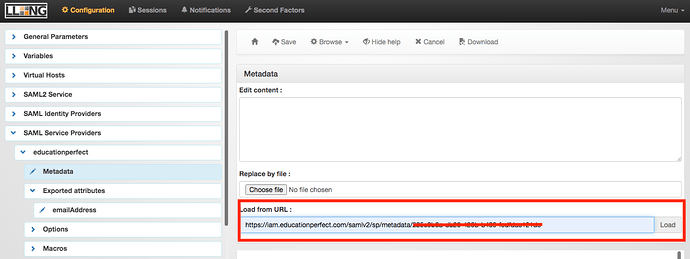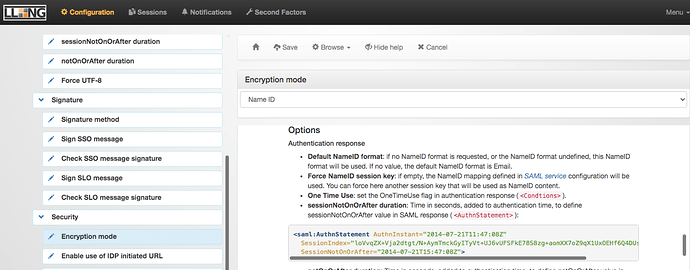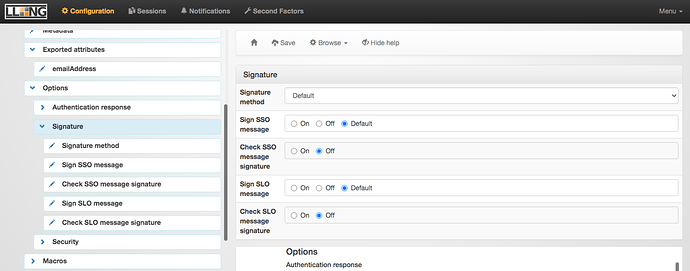Ive got the steps for what i did to get education perfect working with sso incase it helps anyone trying to use the sso with other apps
here are the steps to setup ep
- Provide EP (support@educationperfect.com) with the url for the metadata (https://auth.yourdomain/saml/metadata)
- In the LLNG Manager. In the left gutter, click on SAML Service Providers , then click Add SAML SP at the top. Give it a descriptive name (like “Educationperfect”) and click OK .
- Below SAML Service Providers , expand the new entry for Educationperfect , and click on Metadata . In the Load from URL : box enter the URL for “Issuer” that you receive from Intergrations team and click Load
-
Back in the left gutter, below Options , click on Authentication Response . Select EMAIL in the dropdown box for Default NameID format
-
Back in the left gutter, below Options , click on Security . Under Encryption mode select Name ID from the dropdown box
-
Back in the left gutter, below Options , click on Security . Make sure Enable use of IDP initiated URL is enabled
-
Back in the left gutter, below Metadata , click on Exported attributes . At the top, click on Add attribute , and add 1 attribute. In the attribute box both the Variable name and Attribute name should be emailAddress
- Back in the left gutter, two lines down, expand Options , then click on Signature . Set both Check SSO message signature and Check SLO message signature to Off .
- Save your work.






